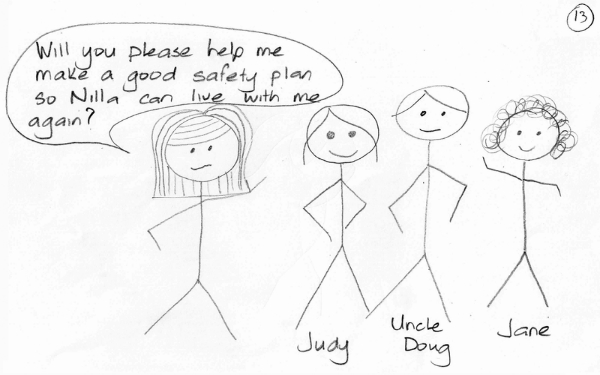
Inform Children’s guide to applying Signs of Safety in high-risk cases, written by Louise Fox, considers how this model of practice supported professionals in developing a family-owned safety plan in a case of suspected child abuse. Inform subscribers can view the full guide by clicking here
Signs of Safety is a strengths-based model of practice which is being adopted by local authorities to provide a consistent framework for their children’s services. One of the ways it can be applied in practice is to structure work with families in high-risk child protection and safeguarding cases, and particularly to develop plans to keep children safe which involve wider family networks.
This article outlines some brief tips for social workers to best make use of this model in their work. These are taken from Inform Children’s in-depth guide (see box above), by Louise Fox from West Sussex Council.
- The child should be at the centre of all safety planning and if a child is old enough they should be involved in their own plan. This can be undertaken by creating a “Words and Pictures” document or by creating a “safety house” with them. Words and pictures is undertaken with the parents and the family network to create a version of events that occurred when abuse or harm happened, and the safety plan which has been created, that the children can understand, usually in the form of a kind of story board or comic strip. It does not matter how basic this looks; in fact, it needs to contain the simplest words and the most basic pictures drawn with or by the parents.
- Signs of Safety practice does not mean that you do not use child protection processes or legal processes. In fact, these can be used skilfully to show the family that the worries are serious but also to plan for permanence. The additional checks and balances that these processes provide are important and useful. Permanence needs to be considered from day one, including parallel planning.
- Preparation is key. You can use Signs of Safety mapping to thoroughly interrogate what you know and don’t know before you meet with the family and friends. Use plain and simple language to tell the family what you are worried about (including admitting what you don’t know) and what you would need to see in order not to be worried. You tell the family what you want, and it is their task to show you how they will do it.
- Prepare “bottom lines”, which are things which must be adhered to, and stick to those – if they aren’t adhered to then you cannot agree the safety plan and you will need to be honest about this with the family. If you are working with high levels of risk you should get a senior manager working with you to agree to the bottom lines.
- The reality of a family-owned safety plan in high-risk cases is that it is very, very hard work for families. The detail and extent to which you might be asking them to monitor an adult family member who could be suspected of abuse is taxing for everyone. Therefore, you need to make sure that you keep in very regular contact with them, even daily at first, and hold very regular meetings to adjust the plan as needed.


 Bournemouth, Christchurch and Poole
Bournemouth, Christchurch and Poole  Hampshire County Council
Hampshire County Council  Lincolnshire County Council
Lincolnshire County Council  Norfolk County Council
Norfolk County Council  Northamptonshire Children’s Trust
Northamptonshire Children’s Trust  South Gloucestershire Council
South Gloucestershire Council  Wiltshire Council
Wiltshire Council  Wokingham Borough Council
Wokingham Borough Council  Children and young people with SEND are ‘valued and prioritised’ in Wiltshire, find inspectors
Children and young people with SEND are ‘valued and prioritised’ in Wiltshire, find inspectors  How specialist refugee teams benefit young people and social workers
How specialist refugee teams benefit young people and social workers  Podcast: returning to social work after becoming a first-time parent
Podcast: returning to social work after becoming a first-time parent  Podcast: would you work for an inadequate-rated service?
Podcast: would you work for an inadequate-rated service?  Family help: one local authority’s experience of the model
Family help: one local authority’s experience of the model  Workforce Insights – showcasing a selection of the sector’s top recruiters
Workforce Insights – showcasing a selection of the sector’s top recruiters 

 Facebook
Facebook X
X LinkedIn
LinkedIn Instagram
Instagram
Comments are closed.